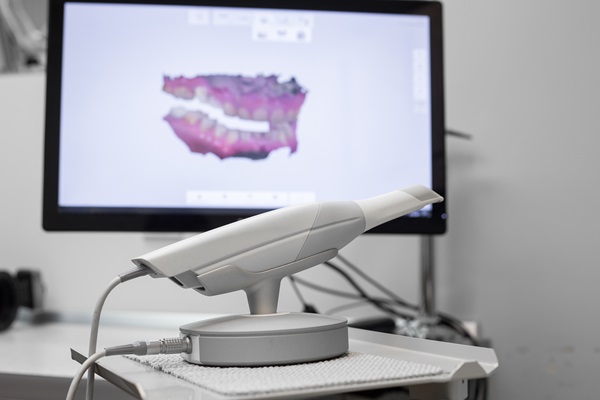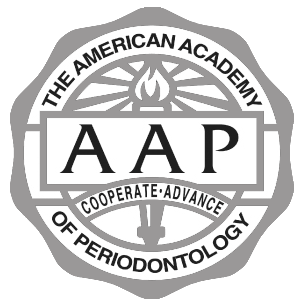CEREC Single Visit Dentistry — No Need for a Temporary Crown

A traditional crown is often placed on a damaged or troubled tooth throughout two dental visits, but a CEREC® crown can be placed in one day. The acronym CEREC stands for Chairside Economical Restorations of Esthetic Ceramic, and these restorations provide a protective cap over a tooth the same way traditional crowns do. However, the physical process of improving the decayed tooth's health is much quicker and requires less hassle.
Reasons for a dental crown
A dental crown can be used to save a tooth that has been infected or damaged. For example, after a root canal, a dentist will cover the treated tooth with a crown to reinforce it and help protect it from future decay. Also, a tooth that is severely damaged will need a crown to hold it together. A dental crown often becomes the next option when a filling, inlay, or onlay is not enough to fix a tooth. Dental crowns allow dentists a way to save teeth and avoid tooth extraction. There was only one way to get a dental crown at one time, and it took two appointments. However, thanks to modern dental technology and CEREC crowns, getting a crown can now be a one-appointment process.
One-and-done procedures
Many patients opt for CEREC crowns because of convenience. Many patients prefer to avoid returning to the dentist for multiple visits, with good reason, to receive a crown. In addition, this special type of restoration provides a quicker avenue to fixing a tooth and better oral health. Understanding how these crowns save time can help make decisions between the two types for those still on the fence.
Preparation
For patients getting a CEREC crown, the dentist will scan their mouth to get a digital image of the tooth that needs a crown. It only takes a quarter of an hour to successfully upload the photos and create a computer model of the new crown. The dimensions of the restoration are tailored to the digital tooth to ensure a proper fit.
For patients getting a traditional crown, the dentist will take an impression using a putty mold, which can be slightly uncomfortable. The impression-taking process only lasts a few minutes. However, the dentist must take the impression again if a mistake is evident. Even though this process is relatively short, many patients still find it annoying enough to consider other options. Next, the impression is sent off to a dental lab, where the crown is made. It typically takes about two weeks, and the patient is given a temporary crown in the meantime.
Temporary crowns can be helpful while the patient waits for their permanent crown. However, these temporary crowns are typically not as strong or well fit as the permanent ones. Therefore, while the patient is wearing the temporary crown, they need to be extra careful when eating so as not to dislodge the crown or damage it.
Crown Creation
The CEREC crown is generated in the dentist's office using a 3D printer, whereas the traditional one is sent to a lab. Traditional restorations can be made of porcelain or metal and need to be manufactured with the right equipment outside the dental office, a process that can take several weeks. This process is why patients have to make a second appointment for the application of the permanent crown, wearing a temporary restoration while they wait. When the dentist can make a CEREC crown in the office, the patient gets the permanent restoration applied then and there.
Application
The natural tooth is prepped for the application of the crown by being shaved down. Once it is in order, the dentist places the cap in the mouth, providing snug protection for the sensitive tooth. This happens in the first and only appointment for CEREC. During the second appointment for traditional crowns. With traditional crowns, the tooth is prepped, and then an impression is made to be sent to the lab. The final crown is cemented in place during the second appointment.
Conclusion
The type of crown a patient chooses depends on individual factors and needs, including time and comfort. If you do not want to deal with a temporary crown or multiple appointments, speak to a dentist about the CEREC option and how it works. This type of restoration may be advantageous depending on your specific dental situation. Traditional and single-day crowns each have their own set of benefits and drawbacks to weigh when choosing which will be more effective for you.
Request an appointment here:https://somervilledentist.com;or call Assembly Dental at (857) 300-5779 for an appointment in our Somerville office.
Check out what others are saying about our dental services on Yelp: CEREC Dentist in Somerville, MA.
Related Posts
A CEREC dentist uses advanced dental technology to give patients high-quality restorations in a single appointment. This technology is revolutionizing the way crowns, veneers, and other dental restorations are made. If you value efficiency, precision, and convenience, working with a CEREC dentist can transform your dental care experience.CEREC, which stands for Chairside Economical Restoration of…
A CEREC dentist uses advanced technology to provide quick, effective treatments that restore damaged teeth. CEREC, which stands for Chairside Economical Restoration of Esthetic Ceramics, allows dentists to create dental restorations like crowns, veneers, and fillings in just one visit. This modern approach eliminates the need for messy impressions and multiple appointments, saving time while…
CEREC® machines allow dentists to design and fabricate custom dental restorations as their patients wait in a dental chair. This treatment option enables dentists to fit the finished product in a single visit. In today’s world, the convenience of combining dental procedures is a huge selling point for same-day restorations.Imagine the time savings if you…
CEREC® (Chairside Economical Restoration of Esthetic Ceramics) restorations are convenient and accurate procedures. Each CEREC treatment has a traditional equivalent, which takes longer to complete. This new way of getting dental restorations can be an advantage to many patients. If you want to know the reasons when to advise a CEREC restoration, here are the…






